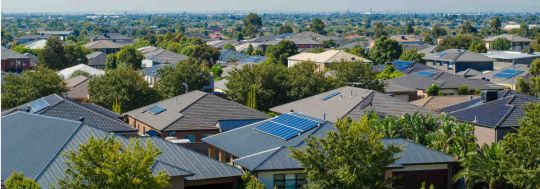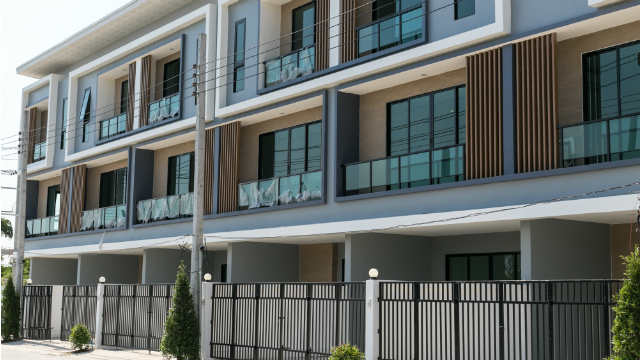The National Rental Affordability Scheme: everything you wanted to know

If you find it hard to pay market rental prices, you may be eligible to apply to rent a National Rental Affordability Scheme (NRAS) property.
The Australian Government launched the National Rental Affordability Scheme (NRAS) in 2008 to increase the supply of affordable rental housing, create more affordable rental housing for low- and middle-income households, and increase large-scale private investment in affordable housing.
As at 30 June 2020, there were over 33,000 active NRAS allocated properties available for eligible tenants around Australia.
NRAS housing is not social housing, but aims to make regular homes more affordable for renters with low to moderate incomes. In this article, we share more about it.
Housing affordability in Australia
Housing affordability has been a key concern for low- and middle-income households for some time. Nationally, the proportion of households renting is increasing, growing 5% in the ten years to 2017–18, according to the Australian Bureau of Statistics (ABS).
In recent years, costs associated with renting a home have increased relative to homeowners with a mortgage. In 2018, renters spent an average of 20% of their income on housing costs, while mortgage holders paid 16%.
Which Australian cities are the least affordable for renters?
Living in metropolitan areas and capital cities can be expensive. In a recent year, nearly half (47.8%) of low-income households in greater capital city areas were considered to be in rental stress, meaning they spend more than 30% of their gross income on housing costs, according to the Australian Institute of Health and Welfare.
Data from Bendigo Bank’s Rental Affordability Index has shown Hobart to be the most unaffordable city for renters, once factors such as income, as well as rental prices, have been considered.
How does the National Rental Affordability Scheme work?
The NRAS scheme works by providing a financial incentive for up to ten years to rent out dwellings to eligible renters at 80% or less of the market value rent. In 2019–20, the median saving for NRAS tenants was $95 per week.
Two payments make up the annual NRAS incentive: a federal government payment and a state or territory contribution. In the 2020–21 NRAS year, these payments are $8,452.94 and $2,817.65 respectively. The payments are attached to the dwelling. This means if the property is sold, the NRAS allocation follows the property to the new owner should they continue renting the property out to eligible tenants.
Investors, often property developers, not-for-profit organisations or community housing providers, receive an incentive in the form of a refundable tax offset, or in some instances, a cash payment. This may be paid pro rata if the property was only available for part of the year, was vacant for more than 91 days, was sold to another owner during the year, if the property houses ineligible tenants or if ineligible rent was charged for part of the year.
Who is eligible to be a tenant in the National Rental Affordability Scheme?
To be eligible, tenants must be Australian citizens, permanent residents or have particular visas and meet government-defined income thresholds, which change depending on the composition of the household.
| 2020-21 NRAS Year | Initial income limit |
|---|---|
| First Adult | $52,324 |
| First Sole Parent | $55,034 |
| Each Additional Adult | $20,017 |
| Each Child* | $17,357 |
Source: dss.gov.au
Everyone living in the household must be included in the income calculation. Some properties may have additional eligibility requirements, so you may want to check with the tenancy manager.
| 2020-21 NRAS Year | ||
|---|---|---|
| Household composition | Initial income limit | Existing tenant income limit* |
| One adult | $52,324 | $65,405 |
| Two adults | $72,341 | $90,427 |
| Three adults | $92,358 | 115,448 |
| Four adults | $112,375 | $140,469 |
| Sole parent with one child | $72,391 | $90,489 |
| Sole parent with two children | $89,748 | $112,185 |
| Sole parent with three children | $107,105 | $133,882 |
| Couple with one child | $89,698 | $112,123 |
| Couple with two children | $107,055 | $133,819 |
| Couple with three children | $124,412 | $155,515 |
Source: dss.gov.au
How do I apply to rent through the National Rental Affordability Scheme?
To register for the NRAS, you can contact the tenancy manager of the property you are interested in directly to register your interest. NRAS tenants sign a standard lease for their property, just like any other rental.
In Queensland, renters also need to register with the One Social Housing Register. To find an NRAS property, prospective tenants can contact one of the ‘approved participants’ directly, speak with a tenancy manager or visit online real estate websites.
Tenants will need to submit a Tenant Demographic Assessment (TDA) annually to the Department of Social Services at the end of each NRAS year (30 April).
What kind of homes are available in the National Rental Affordability Scheme?
NRAS homes include houses, apartments, townhouses and studios. As one of the aims is to provide more high-quality affordable homes, NRAS properties must be new or refurbished and not yet lived in.

Do COVID-19 payments affect eligibility for tenants in the National Rental Affordability Scheme?
Some aspects of the Federal Government’s COVID-19 payments may affect eligibility for tenants in the NRAS scheme. While the two $750 Economic Support Payments and the up to $10,000 in superannuation payments that can be accessed by COVID-19 affected individuals in 2019-20 and 2020-21 are not counted as income for the purposes of NRAS eligibility, income support payments do. This includes the additional fortnightly Coronavirus supplement of $550, as well as any JobKeeper payments tenants are receiving.
How does the National Rental Affordability Scheme impact investors?
According to the Australian Taxation Office (ATO), the NRAS is no longer taking new investments.
Because the aim of the NRAS is to encourage medium and large-scale investment in affordable housing, it’s not generally available to individual or small-scale investors. However, these types of investors can get involved by purchasing a property from a consortium or an ‘approved participant’ already in the scheme. For example, the National Affordable Housing Consortium lists properties with an attached NRAS allocation on its website. Properties may also be advertised through regular real estate channels.
NRAS can be an important income differentiator for charities and not-for-profits, who might otherwise be relying on grant or donation funding. NRAS provides a steady income for these organisations, while still contributing to a social good.
Will the National Rental Affordability Scheme continue in the future?
The National Rental Affordability Scheme will conclude on 30 June 2026. No dwellings will be eligible to receive an incentive after this date.
Individual and small-scale investors can still work with ‘approved participants’ to purchase an NRAS home, and subsided rentals will still be available to tenants under the NRAS until this time.
Cover image source: Shuang Li (Shutterstock)
About Bruce Argyle
Bruce Argyle is Head of the Not-for-Profit Specialist Team at Bendigo and Adelaide Bank, Chair of the Healesville & District Community Bank, and a member of the ACNC Sector Users Reference Group. He has previously held roles at Philanthropy Australia and National Disability Services. Bruce chairs Bendigo Bank’s Social Investment Grants Committee. You can find him on LinkedIn.
This article was reviewed by our Sub Editor Jacqueline Belesky and Finance and Lifestyle Editor (former) Shay Waraker before it was updated, as part of our fact-checking process.
- Housing affordability in Australia
- Which Australian cities are the least affordable for renters?
- How does the National Rental Affordability Scheme work?
- Who is eligible to be a tenant in the National Rental Affordability Scheme?
- How do I apply to rent through the National Rental Affordability Scheme?
- What kind of homes are available in the National Rental Affordability Scheme?
- Do COVID-19 payments affect eligibility for tenants in the National Rental Affordability Scheme?
- How does the National Rental Affordability Scheme impact investors?
- Will the National Rental Affordability Scheme continue in the future?
The comparison rate for all home loans and loans secured against real property are based on secured credit of $150,000 and a term of 25 years.
^WARNING: This comparison rate is true only for the examples given and may not include all fees and charges. Different terms, fees or other loan amounts might result in a different comparison rate.
 Owner occupied
Owner occupied
 20% min deposit
20% min deposit
 Redraw facility
Redraw facility
Try our Home Loans comparison tool to instantly compare Canstar expert rated options.







